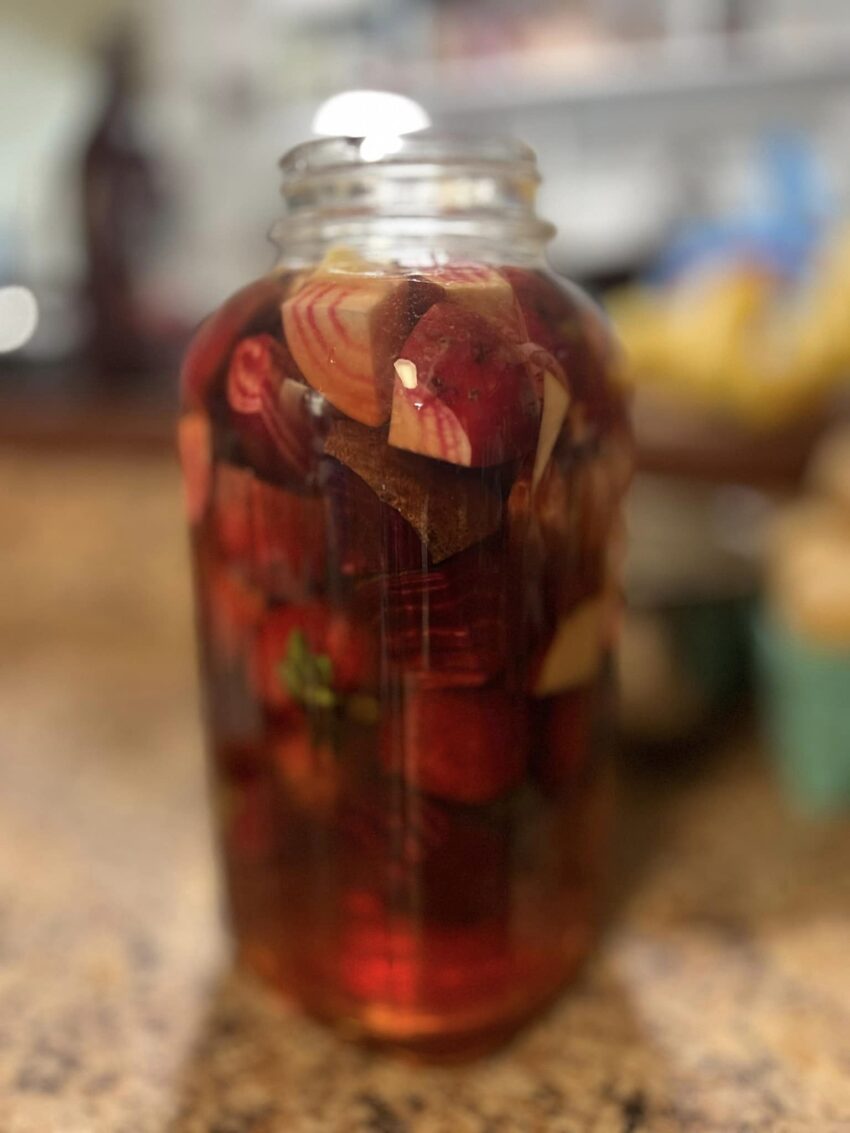Fermenting beets in a jar is a delightful and straightforward way to explore the world of homemade probiotics. This process not only preserves the beets but also transforms them into a tangy, nutrient-rich food that is packed with beneficial bacteria. The vibrant color of fermented beets, coupled with their slightly sour flavor, makes them a unique and healthy addition to many dishes. The fermentation process enhances the natural sweetness of the beets while adding a layer of complexity that is both satisfying and intriguing. The use of caraway seeds and dill can introduce subtle notes of spice and freshness, elevating the flavor profile even further. Whether enjoyed on their own or as part of a larger meal, these fermented beets are sure to be a hit in any kitchen.
Ingredients:
- 3 medium-sized beets, peeled and grated
- 1 tablespoon salt (preferably sea salt or kosher salt)
- 4 cups water (filtered or non-chlorinated)
- 2 cloves garlic, peeled and slightly crushed (optional for added flavor)
- 1 tablespoon caraway seeds (optional)
- A few fresh dill sprigs (optional)
- A glass jar with a tight-fitting lid (1-liter size recommended)
- A fermentation weight or a small glass jar to keep beets submerged
Instructions:
- Prepare the Beets: Begin by peeling and grating the beets using a coarse grater. Grating increases the surface area of the beets, allowing them to ferment more quickly and evenly.
- Make the Brine: In a bowl, dissolve 1 tablespoon of salt into 4 cups of water. Stir until the salt is completely dissolved. The brine helps to create an environment conducive to the growth of beneficial bacteria while inhibiting the growth of harmful bacteria.
- Pack the Jar: Place the grated beets into the glass jar, pressing them down firmly to eliminate any air pockets. If you are adding garlic, caraway seeds, or dill, place these ingredients among the layers of beets. These additions can enhance the flavor of the fermented beets but are entirely optional.
- Add the Brine: Pour the brine over the beets until they are completely submerged. Leave about an inch of space at the top of the jar to allow for expansion during fermentation. This is important to prevent overflow as the beets release gases during the fermentation process.
- Weigh Down the Beets: To ensure the beets stay submerged beneath the brine, place a fermentation weight or a small, clean glass jar filled with water inside the jar. This will prevent mold from forming on any exposed beets.
- Seal and Store: Secure the jar with a tight-fitting lid. If you are using a standard lid, you may want to “burp” the jar daily by slightly unscrewing the lid to release built-up gas. This is less necessary with an airlock lid, which automatically vents excess gas. Store the jar in a cool, dark place, such as a pantry or cupboard, at room temperature (around 60-75°F or 15-24°C).
- Ferment: Allow the beets to ferment for about 5 to 10 days, depending on your taste preference and the room temperature. The warmer the room, the quicker the fermentation process. Taste the beets after 5 days; if they have reached your desired level of tanginess and flavor, they are ready. If not, continue to ferment for a few more days.
- Refrigerate and Enjoy: Once the beets have fermented to your liking, remove the weight and secure the lid tightly. Store the jar in the refrigerator. The cool temperature will slow down the fermentation process, preserving the beets for several months. Use the fermented beets as a tangy addition to salads, sandwiches, or as a side dish.
